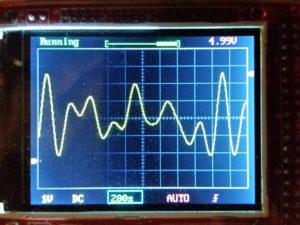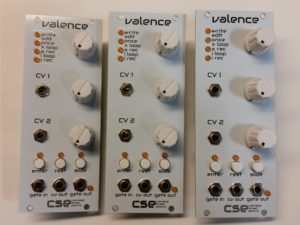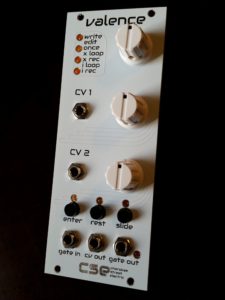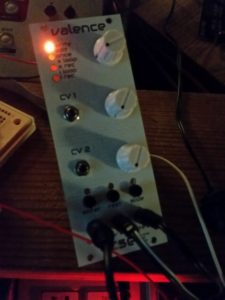Slooooww complex LFOs
 Valence now has a tap tempo feature that allows you to change the internal clock speed to something different from the default range. This allows for fine tuning of the clock speed around a tapped tempo, or extremely long period complex LFOs that can take days or even months to repeat. Pictured here is a sequence with ALL SLIDE turned on, clocked internally with each step of its 16 steps taking about two minutes. This means this complex LFO takes about 33 minutes to repeat.
Valence now has a tap tempo feature that allows you to change the internal clock speed to something different from the default range. This allows for fine tuning of the clock speed around a tapped tempo, or extremely long period complex LFOs that can take days or even months to repeat. Pictured here is a sequence with ALL SLIDE turned on, clocked internally with each step of its 16 steps taking about two minutes. This means this complex LFO takes about 33 minutes to repeat.
User testing and new features
User testing continues with lots of great feedback from testers. I’m hoping they’ll agree to let me post their names and music links here.
Some of the changes:
- allow for deletion of a step
- led feedback when adjusting knobs
- improved “scrub” playback in EDIT mode, better gate debouncing and duty cycle handling
- anti knob jumping when switching patterns, gate duty cycle, and slide interpolation
Progress
today: build two more valence for beta testers.

a total of 4 are now in existence.

Also implemented button locking in loop modes. Holding down a function button for 4 seconds will lock CV1 to that function. After letting go of the button it acts as if it is still held, meaning that CV1 can now be changed without physically holding the button down. This allows external CV control of pattern select, gate duty, and slide interpolation types. Pressing any button exits this mode. Also works in Record modes.
I think I might have it..
Wow that was difficult… but I think I have TIES working 100%. Just a few more tests to write…
Thinking about adding a way to lock CV1 to switch between patterns.
TIES
Much of the work on the Valence firmware lately has focused on tied notes. Valence defines a tie as:
Two or more steps that are all
- slid
- slide in the same direction (up or down)
- rests (no gates)
- with the optional exception of the first step
When these conditions are met, valence figures out how many steps are in the tie and creates a smooth transition from the first note to the last note over its entire length. In this way, slides can be played that move from one note to another over multiple steps that do not have any discontinuities.
This in and of itself has been challenging, but is now mostly working. This will get even more difficult when trying to do this stuff in MIRROR mode so that the sequence looks the same forward as in reverse.
Valence has arrived
The first finished module.


Valence #1
The very first one! 
Front Panels delivered

Front panels just now got here!
Excited!
Random 16 demo 1
A new feature, randomly generated steps:
Press and hold ENTER in WRITE mode. 1 blink adds one note. Keep holding, another blink adds 1 more note. Keep holding for 2 more, then 4 more, then 8 more for a total of 16. Each note is quanitized to the scale you selected on the CV2 knob, and each has a given probability of being a REST, SLIDE, FROM, or a combination of these.
Sequence played on a modded TTSH and recorded lazily through a noisy mixer…
